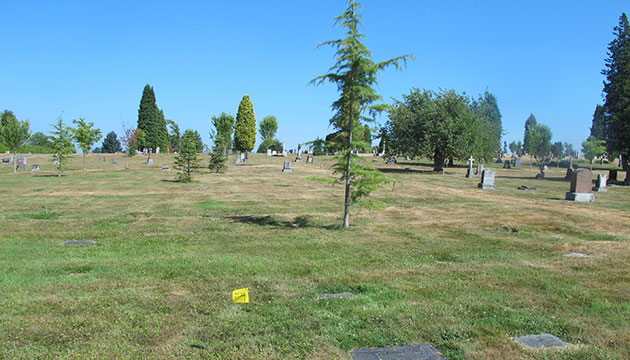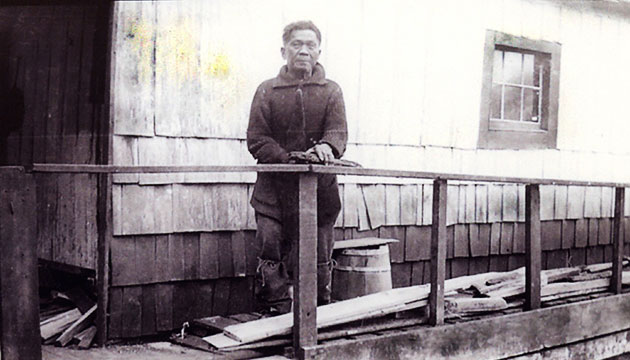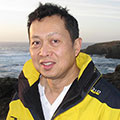After combing through the Censuses of Canada as early as 1825 until 1921, and perusing archives, directories and all sources mentioned earlier,
the earliest Filipino on record to have immigrated to Canada turns out to be Benson Flores. Listed in the 1911 Census of Canada as Benjamin Flores with 1861 as the year of immigration, this is the earliest date of arrival and eventual settlement for anyone of Filipino nationality.
Benson Flores was born in May 1846, a Catholic, single all his life, with Bowen Island, British Columbia as his residence.
See https://www.bac-lac.gc.ca/eng/census/1911/Pages/item.aspx?itemid=235219
Benson was probably a strapping 15-year-old when he landed, most likely as a young seaman for a foreign vessel docking in Vancouver, BC. In the early 1800s, boys as young as 12 were recruited as ship’s crew.
The Manila-Acapulco Galleon Trade’s last trip was in 1815. Benson was not even born yet.
A closer look at the census print indicates Benson was naturalized only in 1909, two years before the 1911 census.
Based on the 1901 Census of Canada, the earliest Filipino to be naturalized was Antoine Bentorre in 188o, followed by Castro Ricardo in 1886.
What does naturalized mean then? Before 1947, people born in Canada typically referred to themselves as Canadian citizens but they were actually British subjects. For people born outside of Canada, naturalization did not mean a British citizenship, nor losing their original nationality, but merely having the rights and duties of a British subject within the colony of Canada.
However, the Immigration Act of 1910 used the term “Canadian citizen” to include “a person naturalized under the laws of Canada who had not subsequently become an alien or lost Canadian domicile”.
This means that it was only in 1910, regardless of the year of naturalization, when all naturalized individuals began to be referred to as Canadian citizens, within Canada. Outside Canada, they still maintained their original nationality.
On January 1, 1947, the Canadian Citizenship Act of 1946, which created fully independent Canadian citizenship, separate from British law and status as British subjects, came into force. By this time, Benson and his compatriots had already passed away.
Who was Benson Flores?
 The remains of Benson Flores were marked with a yellow flag, at the Horne Addition section of the Mountain View Cemetery, Vancouver, British Columbia.
The remains of Benson Flores were marked with a yellow flag, at the Horne Addition section of the Mountain View Cemetery, Vancouver, British Columbia.
Benson Flores was everybody’s friend in Bowen Island.
Based on Irene Howard’s book, "Bowen Island 1872 – 1972”, Ben Flores had a float house in Snug Cove, Bowen Island and liked to play the concertina and sing. He was a fisherman, a beachcomber, a trapper and operated the first boat rentals, as Bowen Island was increasingly becoming a tourist destination from folks in Vancouver (called Gastown or Granville before 1886). In addition to his shack in Snug Cove, he owned land on Bowen Island, closer to the foot of Mount Gardner, District Lot 1426. Ben Flores was a giving person, as he “would paddle around in his dugout with a sack of crabs and dump them on your beach.”
In his latter years, people would call him “Old Ben.”
In an audio recording, a neighbor George Dorman said, “Ben Flores was a coloured boy and was my greatest friend. I don’t think I have met anyone who is his equal. He was such a good friend. He was genuine – he would share, share and share alike – in all the work we did together. He was really a good person. He knew people before they even came to Bowen Island. As far as I know, he was a Filipino - from the Philippine Islands. He was a fisherman. It used to be that they came on these old windjammers and they would get up here and see our beautiful country and they would start fishing. I still have a picture of Old Ben’s boat with about 25 people on it. Taken on the beach right beside his cabin. He homesteaded first right beside Trout Lake. The land was too far from the ocean and he had to carry everything in. He was still there when we first came there. I think it was the turn of the century (1900s). He moved back to Snug Cove.”
There were no records found that Benson Flores ever returned for a visit to the Philippines.
Death of Benson Flores
Based on the Certificate of Registration of Death, Benson Flores was born in 1848, and died at the age of 81 on April 11, 1929 at 5 a.m. at the Vancouver General Hospital. He was buried on April 13, 1929 in the Horne Addition section of Mountain View Cemetery in Vancouver, BC.
His birth record in the Census of Canada was May 1846 (no specific date taken). Because it was most likely Benson who provided the 1911 Census of Canada data when he was only 65 years old, we will use 1846. Considering he was born in May but died in April, he was actually 82 years old when he passed away. Cause of death was listed as chronic nephritis and chronic cystitis, which he suffered from for almost one and a half years prior.
Witness to his death was Madeline Ray, a long-time personal acquaintance of Benson living in Vancouver, who attested and signed that Benson Flores was unmarried, and had no next-of-kin within the province of British Columbia.
Benson was a bachelor all his life as indicated in the census, his death record, and in his February 1927 will. In the probate, Benson bequeathed his assets to four residents of Bowen Island: Martha Cameron ($500 which today is worth $7,308.51), Mah Hong ($150 which today is worth $2,192.55), Donald Cameron ($100 which today is worth $1,461.7), and Kenneth Cameron (rowboats, Evinrude engine, gun, and all furniture). We do not know the exact relations between Benson and the beneficiaries.
At the time of his death, Benson had $353.35 (which today is worth $5,164.94) in the Bank of Montreal, $5.00 in cash, $50.00 value for the boats, shack and furniture, a promissory note of $795.00 from Mr. J. T. Little for a total of $1,203.35.
However, because of Benson’s costly hospital bills, not counting funeral, loans, and other expenses, the total liabilities were $1,212.50. His estate was declared insolvent.
Visiting Benson Flores
On August 3, 2021, I called and requested Mountain View Cemetery if I can visit the unmarked grave of Benson Flores. That sunny afternoon, Grant, one of the cemetery caretakers, drove me to the site in the Horne Addition (between 31st and 33rd Avenue next to Fraser Street). Grant had just earlier positioned on the plot a small yellow flag on a wire stick, with the written name “Benson Flores”. Grant informed me the coffin was laid from the west (the head) to the east. The flag was on the head part.
As I stood, I reflected on the life of the first recorded Filipino in Canada as an immigrant. I felt a sense of closeness with the adventures that Benson Flores had more than a century ago. Then I half-knelt, and said, “Benson, if you can hear me, wherever you are, I want you to know that you are not forgotten …”
Previous issue: First Filipino Canadians - The Pioneers based on Official Census (Part 3 of 4)




